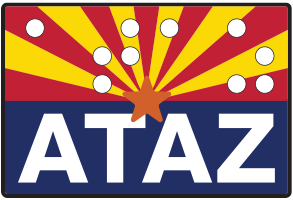PDF 467kb, 2 pages
Overview
The topic of Hearing loss is very broad and can mean loss of the ability to hear only certain sounds to complete hearing loss at birth or early childhood or after language development. Individuals who have grown up Deaf may have some hearing but may identify with Deaf culture and in the US typically use ASL (American Sign Language) for communication. Individuals who are considered Late-Deafened may also use ASL and other visual forms of communication but may not identify with cultural aspects of being Deaf. Individuals with hearing loss frequently do not relate the condition to being a disability or an impairment and typically prefer the terms, “Deaf” or “Hard of Hearing”.
Medical Aspects
A wide range of medical conditions may cause a person to be or become Deaf or Hard of Hearing. The hearing loss may impact high or low frequency sounds and/or volume (decibel level). Some medical conditions are progressive and require periodic treatment. An audiologist is a licensed medical professional whose specialty is hearing and balance. The minimum credential for an audiologist is a Master’s degree and they can measure the degree and type of hearing loss and prescribe hearing aids and/or medical treatments such as implant technologies. A hearing aid dispenser can also measure and prescribe hearing aids but may not recognize certain hearing or ear related medical conditions. An Ear, Nose and Throat doctor may also serve the client.
Communication
Persons who are Deaf or Hard of Hearing typically have a preferred primary communication mode that is either visual or auditory, or may be both. ASL is a visual language and communication can be face to face or via video technologies. For persons who primarily use ASL, written English may be a secondary language with spelling and syntax reflecting more ASL than grammatically correct written English. Persons who are not literate in ASL who have some hearing may utilize hearing aids or other device/s that can amplify sound and provide custom tone control.
Environmental Access and Acoustics
Hearing aids may be used as a communication support and/or may provide access to environmental sounds including traffic and emergency alerts. Hearing Aids typically have a number of settings that can be customized to meet the auditory demands of specific environments and allow access to additional technologies such as loop systems. Emergency alerts typically have a visual and an auditory output. Other alerts such as timers, telephone ringers and doorbells, may have amplified sounds and/or visual and/or vibrating output.
Assistive Technology
Assistive technology for those with hearing loss can vary depending on the user’s needs. Assistive Listening Devices use different methods to transmit sounds to a hearing aid. Some technologies translate spoken word to text, or connect individuals with hearing loss to an ASL interpreter. As mentioned above, others may use visual or tactile cues to alert users to an alarm or notification. Hearing aids are a medical device and are not considered assistive technology. Devices may be purchased privately or with assistance from organizations such as AzTEDP or AzTAP.
Assistive Technology to accommodate persons who are Deaf or Hard of Hearing [AT-DHH]
Amplification/Tone Technologies:
- Telephones
- Personal Amplification Systems
- Alerting Systems
- Smart Phone Apps
Visual Technologies:
- Video phone technologies
- Captioned phones
- Captioned and/or signed media
- Devices with lighted or text output
Tactile/Vibrating:
- Smart Phone Apps
- Visual/tactile alerting systems
 ATArizona.com
ATArizona.com 